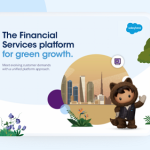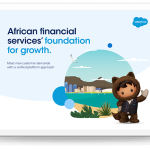The banking sector – both corporate and retail – has always had a distinctly cautious relationship with technology. Technology is the key to achieving efficiencies, streamlining processes, lowering costs and, most importantly, providing a better more engaging customer experience. But every tech comes with a certain amount of risk. Banking is, of course, the art of balancing risk with potential value. So, whenever a financial institution considers adopting emerging technologies, the risk specialists get to work. And so do the regulators.
It’s nothing new. I think it’s always useful to remind ourselves that the sector has a long tradition of adopting technology focused on meeting customer needs. More than 50 years ago the rollout of the ATM is a great example. It was designed to free customers from the tyranny of banking hours. Until of course the digital revolution and the rise of mobile banking.
What’s that got to do with AI? Well, the same thought processes apply to the introduction of AI, Generative AI, Machine Learning, and Large Language Models (LLM). Making the most of the technology demands a relentless focus on tangible benefits to the bank, its customers, and its stakeholders, linked to a clear understanding of the risks involved with reference to an ever-evolving regulatory landscape.
But I believe that getting the right professional services professionals involved is the key to making the most of AI in banking.
AI isn’t one thing; it is many things (and it’s not a person)
Any casual search for the benefits of AI in all forms of banking (especially if you ask Chat GPT to do it) will come up with the same key points. AI and Machine Learning frees skilled banking staff (at all levels) from mundane, repetitive tasks whilst improving accuracy and reducing errors. That makes sense. Machines don’t lose focus or take breaks. More importantly, the coming of Generative AI is adding to an employee’s ability to streamline their own expertise. They can use technologies like Salesforce’s own Einstein GPT to leverage aggregated data (a task done expertly by our Data Cloud) and LLMs to rapidly generate personalised communications. It enables you to send them out automatically to match a wide range of scenarios – from investment decisions to choice of accounts. That can in turn boost employee capacity (and morale) and deliver a responsive and deeply personal service to clients.
So, the AI in itself is not the point, it’s what it does for the banker, broker, or advisor that counts. Their capacity is increased, and their skills are both augmented and improved. That’s why Salesforce has invested significantly in AI as well as our Data Cloud. It’s why we’ve recently integrated with OpenAI and developed Einstein GPT. The point is to provide the range of technologies which often get lumped together under the now generic title of ‘Artificial Intelligence’ and focus them on the individuals that matter. Which are, as I’ve stressed, your employees and your customers. The point is to enhance core relationships and not just automate them. Automation without true customer-centricity is a risk to your business in itself.
Leaving it all to AI is risky
As Marc Cooper, CEO of Solomon Partners, stressed in a recent Forbes article, it’s important to curate how your AI learns from data. There is a risk it could just replicate the mistakes that humans have made in the past. That could lead to market volatility in certain circumstances. “I do worry about the very human tendency to relentlessly push out our technology and capabilities without perfect insight into the possible outcomes,” he wrote.
For me, that’s why it’s important to start with the humans. To deploy the right internal and external (human) skills to ensure a successful journey into the still-developing world of AI. It’s also vital to, as Marc Cooper stresses, ‘balance risk with prudence.’ And to do that it’s important to engage with human experts to map out your adoption path. That’s how you can make ‘no regrets’ moves which will help you find the right solutions for your bank.
As Dr Kate Darling, Research Scientist at the MIT Media Labstressed, machines don’t perceive the world the way we do. While they can compute different scenarios based on massive amounts of data much faster than we can, they don’t have the ‘mental’ flexibility to make contextual judgments that are as nuanced as those that humans are capable of. Machines are at the mercy of their algorithms until those algorithms are rewritten by people who can experience the depth and complexity of a situation.
Forging the right link between artificial and human intelligence
Dealing with your own money, your firm’s money, and other people’s money is ultimately, I believe, a human responsibility. Technology should be deployed in the service of handling that money in the safest, most efficient, and most profitable way. For all parties, bankers and their customers (as well as society as a whole).
I think that’s why our approach at Salesforce is a powerful one. As I’ve said, we’re investing heavily in the technology; witness our $250 million generative AI fund and tie-up with OpenAI. Over our 25-year history we’ve made a range of acquisitions to ensure that we can deliver the future. Most recently, we bought Airkit.ai, a creator of AI-powered customer service applications and experiences to augment our capabilities.
So, it’s clear that there’s no doubt about our commitment to leveraging AI. Our focus is on boosting efficiencies in both front and middle offices and automate key tasks to free people to be more human when it comes to customer service as well as strategic investment decisions. It’s a relentless focus on using AI and machine learning to not only manage data to drive insights, but also to keep that data safe and ensure compliance.
We’ve created a team of experts that we call AI Coach. And we chose the word ‘coach’ purposely; the point is to collaborate to ensure you adopt, scale, and create value from AI in ways that match your specific needs. We start with assessing your AI readiness and the areas where it can prove itself. Then ensure that it does over a five-to-six-week period. That then helps create a roadmap based on a clear strategic vision. Know what you want and understand the best way to get it.
In my experience, working with a great coach (or coaches) is the best way to achieve any goal in life, but it’s especially important when it comes to making the most of new, powerful technologies.
That’s what I and my colleagues at Salesforce do every day. We start with human intelligence to make the most of its artificial counterpart. And that’s helping us deliver a continuous flow of new capabilities. I’ll talk about those – and more – as we roll them out, so stay tuned.
Financial Services Blogs
Catch up on the latest Financial Services blogs from Salesforce UKI.




























